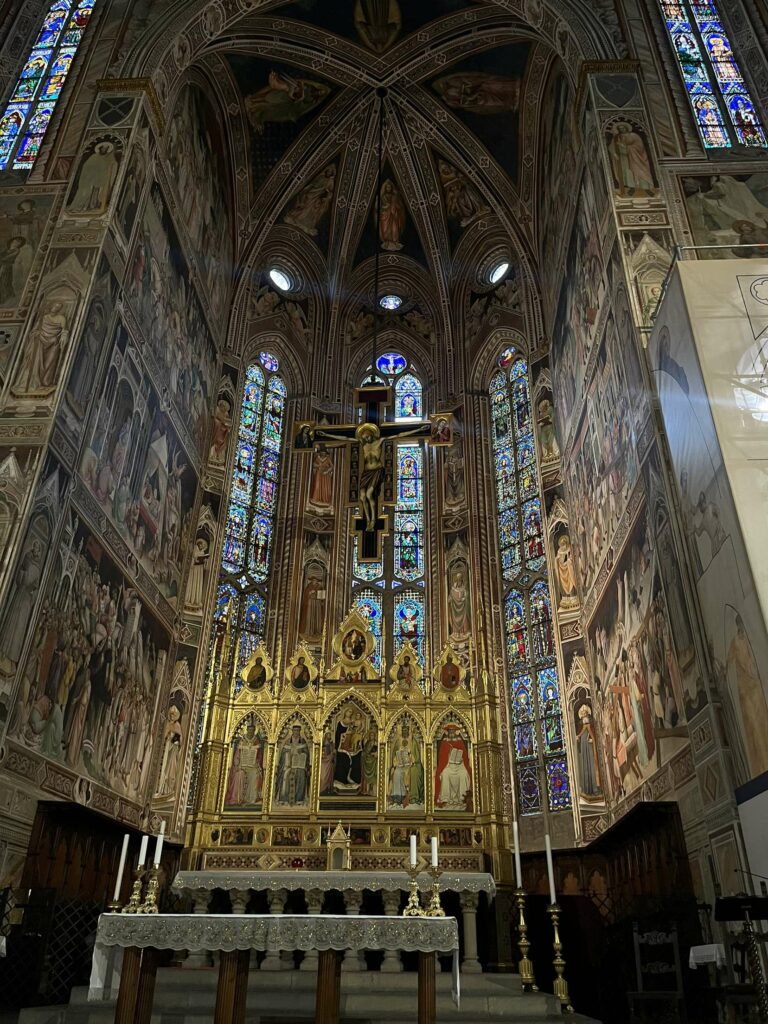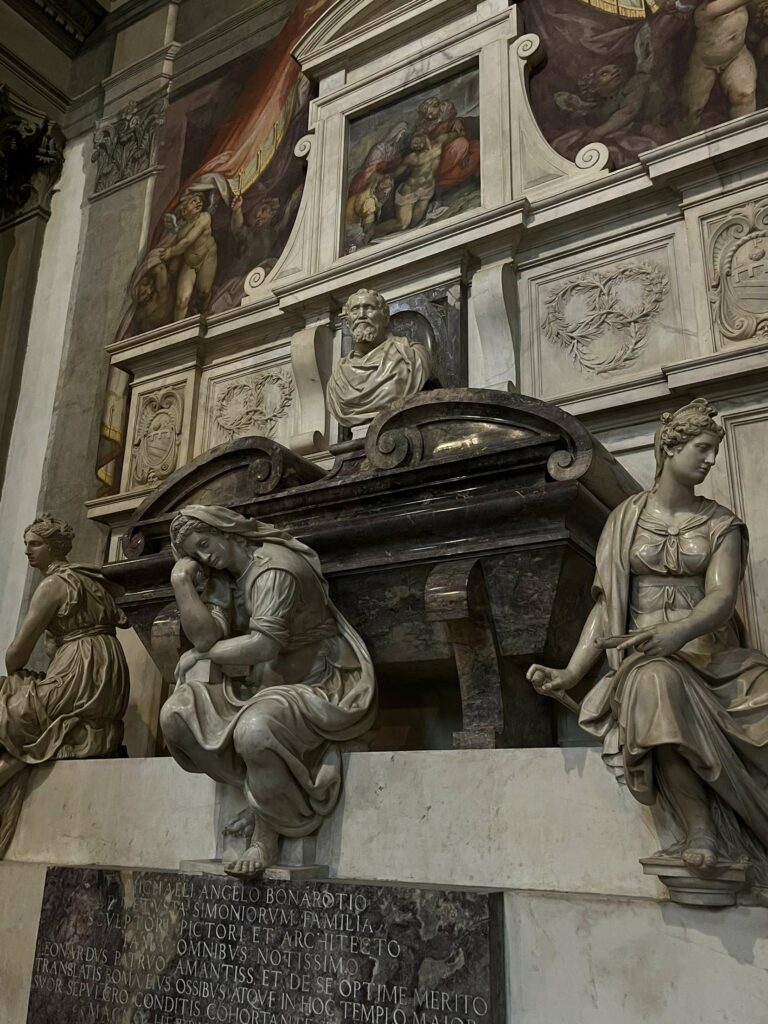Ciao!
We have been very busy each day! We attend class Monday-Friday, and in the afternoons, we visit sites as a group. The class I am taking at Florence University of the Arts is private vocal coaching. We have continued to work on good air support, dropping the jaw, and expanding my higher range. I am learning three Italians songs: Caro mio ben, Sebben Crudele, and O leggiadri occhi belli. I just started my third song, and the Italian in that song is much more difficult than the other two pieces.
Thursday, May 25th, we visited the Basilica of Santa Croce. Many of us have walked by this beautiful site each day. We finally got to see the inside of it, and it is very beautiful!

There were two additional sites where Santa Croce once stood. The original Santa Croce was in a marshy area outside of Florence. St. Francis of Assisi founded this location, and it was built in 1212. This first church was replaced by a second church that was built between 1252 and 1267. This second building became too small for the expanding congregation, and the Santa Croce we visited began construction in 1294 or 1295. The basilica was designed by Arnolfo di Cambio, but the building of this magnificent site was not completed until after his death.
Santa Croce is the final resting place for several well-known figures. Michelangelo Buonarroti died in 1564 in Rome. His body was placed in the Holy Apostles church in Rome. However, his body only remained there for a short time. Michelangelo’s body was transported to Florence among cloths and merchandise in a cart, and he was given a funeral in San Lorenzo on July 14th, 1564. After the funeral, Michelangelo’s body was placed into the tomb at Santa Croce.

Vasari was commissioned to construct Michelangelo’s tomb. Above the tomb are three sculptures that are meant to represent painting, sculpting, and architecture. Each sculpture is a human, and their faces appear to be saddened. Their bodies seem slumped and distraught. These personifications of the great skills Michelangelo possessed exude how these areas suffered after his death. However, many more great artists came along, and many looked to Michelangelo and his work for inspiration.
Next to the bust of Michelangelo, there are sets of three laurel wreaths intertwined. These represent the relationship between painting, sculpting, and architecture. Michelangelo was a master of all three of these skills, so the intertwined wreaths represent Michelangelo’s skills in all three areas. Michelangelo is said to have stamped some of the marble he was using with the same logo. These wreaths also became the logo for the Accademia, the gallery where David, and other Michelangelo works, reside.
The tomb also features a painted frescoe that is meant to represent the Sistine Chapel. Below the frescoe is a painting of the lamentation over the dead Christ. On the other side of each wreath logo are the coat of arms of the Buonarotti family. This tomb’s details do not only represent Michelangelo, but his work, his legacy, and his family.
Since I am the only student in my class, I haven’t met anybody while in Italy. I have been enjoying spending time with the other IUE students here with me! Many evenings, we try a new restaurant after our afternoon together at a site. We’ve had some good food!
Serena
- Opera, Fashion, and Unforgettable Bonds! - June 2, 2023
- The Basilica of Santa Maria Novella - June 1, 2023
- The Bargello Museum - June 1, 2023
- The Duomo – Inside and Out - May 30, 2023
- San Marco and the Long-Awaited Duomo - May 29, 2023
- New Heights and Botanical Cultivations - May 28, 2023
- Santa Croce - May 27, 2023
- Visiting the Accademia Gallery - May 26, 2023
- San Lorenzo and the Medici Chapels - May 25, 2023
- L’Ospedale degli Innocenti - May 24, 2023